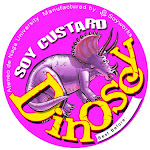Bombon is a culturally rich town located here in Camarines
Bombon, undoubtedly, is my hometown. Both my parents are originally from Bombon, even though I was raised in
Bombon is a really special place to me. It is where that I spend my first four years of childhood. It is in Bombon that I made my first few steps, learned to talk, and a whole lot more. Bombon is a place like no other because it reminds me of my childhood and the happy moments playing and doing crazy stuffs with my cousins. It is also in Bombon that I experienced stupid things such as falling out of the ladder of the church, running over and breaking the glass wall almost making me blind, hanging over the rope, and a whole lot more. Not to mention letting a huge snake rush over my body when I was a baby!
I feel relaxed when I am in Bombon. The place is really calm and peaceful. In fact, there are only a few cases of conflicts of interest between parties (neighbor to neighbor), stealing, and other criminal and civil cases. Bombon is primarily a farm land but it also has its own tourist attraction called the Inarihan falls located in Iraya, the southern part of Bombon.
Bombon is located near Quipayo, Calabanga, Magarao and Canaman. It is composed of eight barangays- . San Antonio, San Francisco, San Isidro (Pob.), San Jose (Pob.), Pagao (San Juan), San Roque (Pob.), Siembre, and Santo Domingo. With a land area of 4, 420 hectares, and a population of 12, 843, Bombon is, according to the Internet, renowned for its very hospitable and religious people. The town’s major sources of employment are agriculture and its complementary industries.
Bombon is the home of religious people. More than 95% of its entire population is Roman Catholic and loyal devotees of several Catholic Saints. The residents still practice old customs and traditions of practicing procession during important and known religious dates, sulong-sulong, pantomina, and so on.
During March to May, huge images of certain saints are paraded all around their place. Procession happens for three consecutive nights with different routes (e.g. Hilawud, or Iraya, the southern part of Bombon). I would always attend to these processions because I love to see colorful way of their expression of worship and love to God.
Sulong-sulong, on the other hand, is done during December, and has a literal meaning of “helping someone by letting him go inside the house and providing him food”. This belief is actually a reenactment of how Mary and Joseph looked for shelter when Mary was about to give birth to Jesus. Sulong-sulong, therefore, is based on the belief that Mary and Joseph would knock in their houses hoping someone would help them. Residents of Bombon believe that they should prepare their houses and prepare some food because Mary and Joseph might go over their house seeking help.




.jpg)










.jpg)





